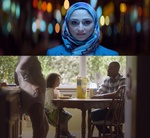How Coke and Cheerios Made ‘Wholesome’ the New ‘Edgy’
Posted in: UncategorizedTwenty percent of Americans speak a language other than English at home; 55% of Americans support same-sex marriage and 87% of Americans support interracial marriage.
With those numbers in mind, how does a commercial about an interracial family eating cereal draw more controversy and criticism than Radio Shack’s Beats Pill Blurred Lines Ad?
Back in May, Cheerios released the first version of its Super Bowl ad with the young girl talking about heart health with her white mother and then giving heart healthy cheerios to her black father. With almost 5 million YouTube views, this was the most watched cereal ad in history, and it turned out to be the most controversial.
A small minority of the American population thought the ad was offensive, which lead to thousands of blog posts, tweets, comments, and news clips supporting Cheerios and the General Mills brand.
This average commercial was a huge win for Cheerios because of the free media coverage it received (see Google Trends) and because the brand looked like a hero when it stood by its cause.
“There are many kinds of families, and Cheerios celebrates them all,” Camille Gibson, vice president of marketing for Cheerios told USA Today, “it’s been a very positive response overall.”
The ad was enough of a success that Cheerios brought back the family for the Super Bowl. This would have been major news had Coca-Cola not stolen Cheerios’ thunder.
Coca-Cola’s “It’s Beautiful” ad angered conservative Americans who believe English should be the only language spoken in our country. Most were so up in arms about the rampant use of Spanish, Hindi, and five other foreign languages that they didn’t even note the two dads roller-skating with their daughter halfway through – the first gay couple to be featured in a Super Bowl ad, nonetheless.
Coca-Cola’s message isn’t that we should all learn Tagalog, it’s that Coca-Cola is a product for everyone, no matter their race, gender, age, or sexual orientation.
“‘It’s Beautiful’ is exactly what Coca-Cola is all about: celebrating the diversity that makes this country great and the fact that anyone can thrive here and be happy. We hope the ad gets people talking and thinking about what it means to be proud to be American,” said Katie Bayne, president, North America Brands, Coca-Cola North America said in a press release.
Both of these ads took simple, inclusive messages, presented them in a warm-hearted way, and faced media firestorms as the result. There’s no doubt that the Cheerios ad was a success, and the Coca-Cola ad prompted media outside of lifestyle and marketing outlets to cover the company and the ad. Five days after the Super Bowl, people are still talking about it.
This begs the question: when will brands start to actively poke the bear using wholesome ads? Arguably they already are. When One Million Moms protested JC Penney for hiring lesbian spokesperson Ellen DeGeneres, they created an ad with two gay dads.
Wholesome is the new edgy. Family-friendly brands don’t need to be offensive by objectifying women or trying to make their products look tough, they simply need to lean slightly toward the left, and endless media coverage and brand advocates will follow.
This contributed article was written by Amanda Dodge, a writer and editor at CopyPress.


Post a Comment